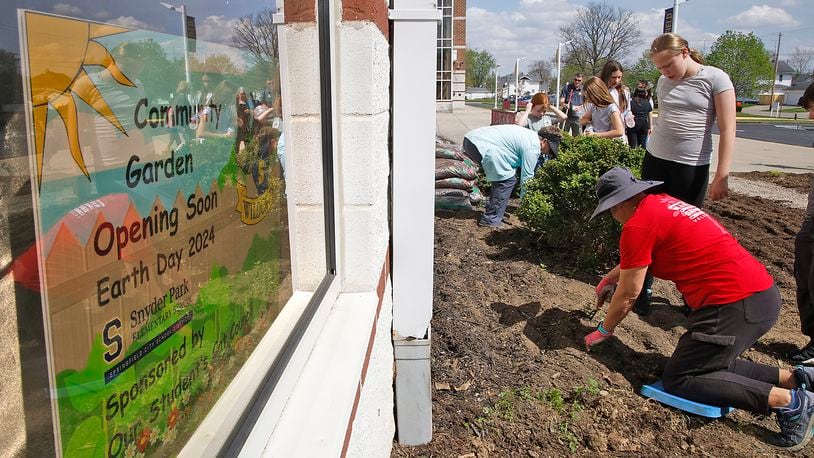Smithsonian Gardens also worked with Springfield Museum of Art, a Smithsonian Affiliate, and Snyder Park with a goal “to pilot transitioning their successful local school program to a national level,” said Amy Korpieski, who manages the partnership for the art museum.
“It’s a great program and has been a great opportunity to connect the Smithsonian to Springfield,” said Jessimi Jones, executive director of the Springfield Museum of Art.
Credit: Bill Lackey
Credit: Bill Lackey
Two years ago, the Cat Council, Snyder Park’s school leadership group, initiated a service learning project and began working with Korpieski at the museum to learn more about the process of pollination. The council then decided they wanted to create a space at the school that was “visibly appealing to visitors” and beneficial to nature.
The council, classroom teachers, the museum and teaching artists have participated in this program over the last two years. During the process, students walked through the Green Ambassador online tool from the Smithsonian and planned a school garden, met virtually with Master Gardeners at Smithsonian, and created drawings, needle felted models of the garden, and wood and needle felted sculptures of the garden.
These creations took place in the classroom, during art classes, during Cat Council meetings, and at Meet the Teacher night and parent/teacher conference nights.
“While learning about pollinators, students and family adults used polymer clay to create arty pollinators for the garden. Many of the artworks were on display in the main hallway and cafeteria at school as they awaited their turn in the garden,” Korpieski said.
Patricia Alexander, Snyder Park instructional coach, said third graders created Totems for display that focused on exploration of the sea’s life forms and sixth graders worked on needle felting creating of abstract plants setting roots that grow to symbolize joy, hope and a sense of home.
“Our initial vision of bringing artwork created by students to the community is now becoming a reality,” she said. “Our community garden is all about bringing people together and enhancing the beauty of public spaces that our families can easily get to and enjoy.”
Alexander said this project would not have been realized without the museum because they served as a source of networking and collaboration.
“We would like to take this opportunity to thank ... the Springfield Museum of Art for all of the hard work taken on over the past two years to connect Snyder Park not only with The Smithsonian in Washington, D.C., but also connecting us with partners within the community that amplified the impact of this project,” she said.
The project, funded by a mini-grant from the Smithsonian and Springfield Museum of Art, was completed with the efforts of Snyder Park, the museum, Nightengale Montessori School, Clark County Master Gardeners, a part of The Ohio State University Extension Master Gardener Volunteer Program, and Grace United Methodist Church of Springfield.
Snyder Park will hold a ribbon-cutting ceremony for the garden on April 22 as part of Earth Day events.
Credit: Bill Lackey
Credit: Bill Lackey
About the Author
